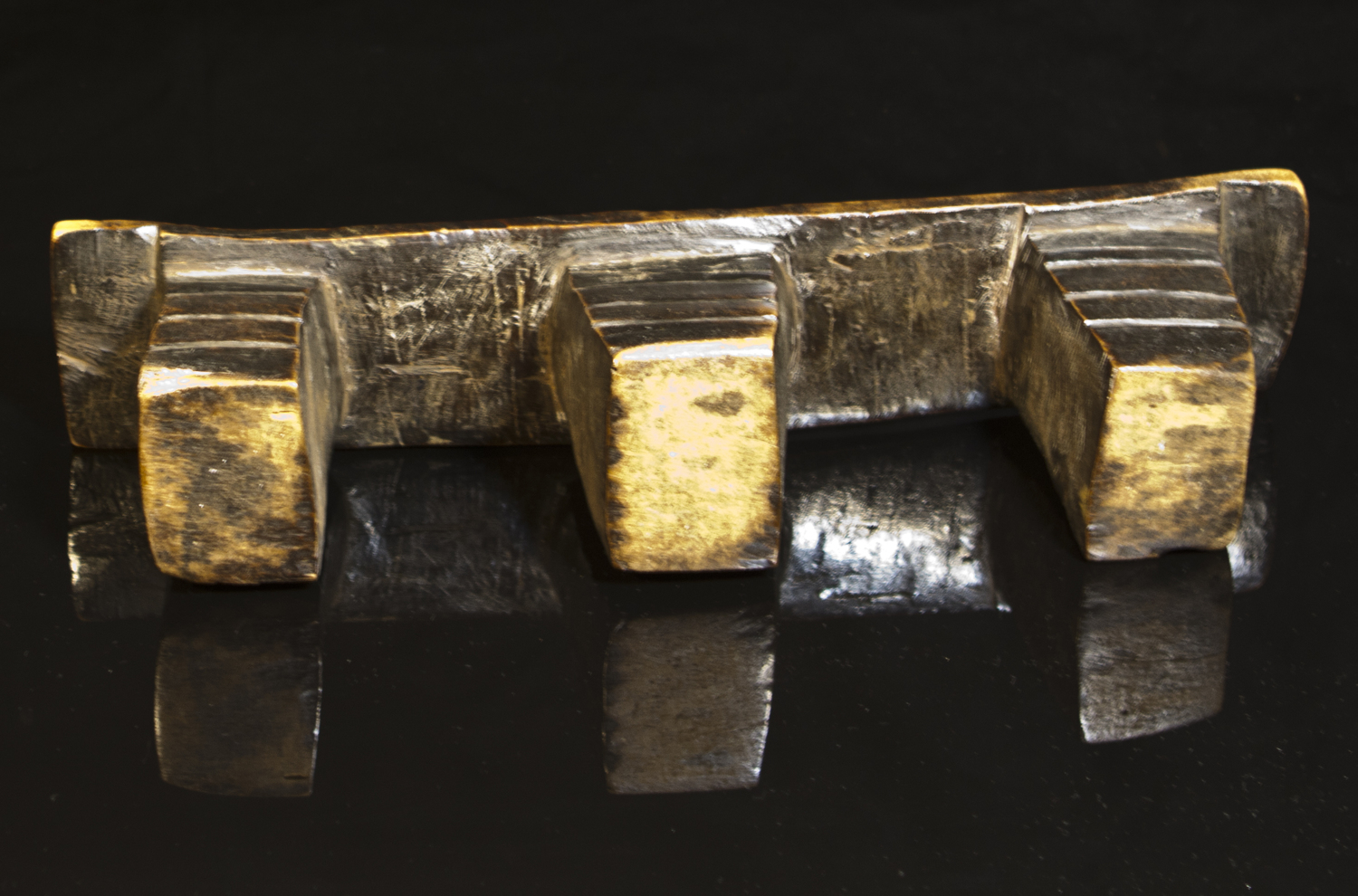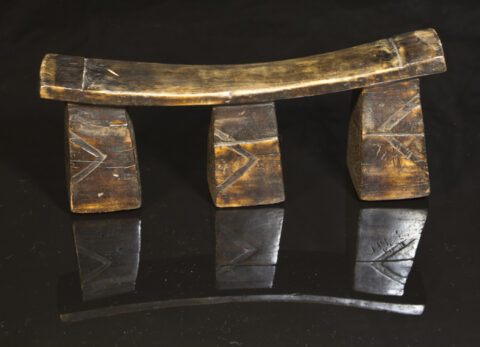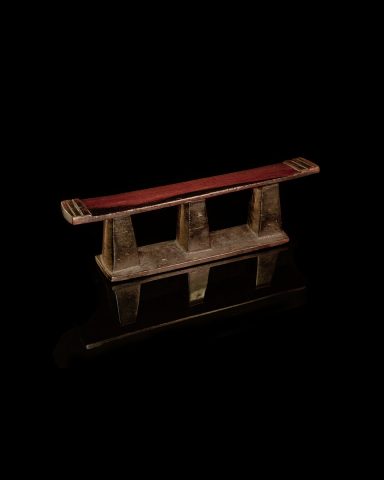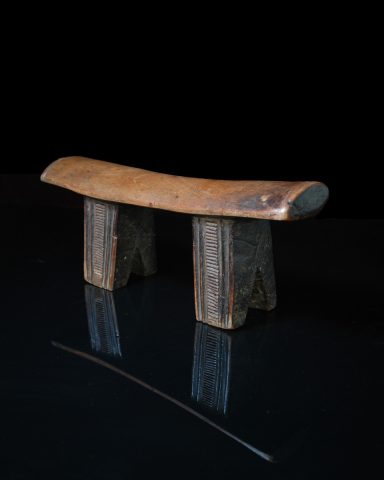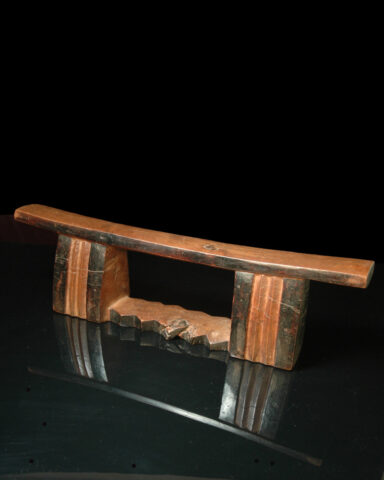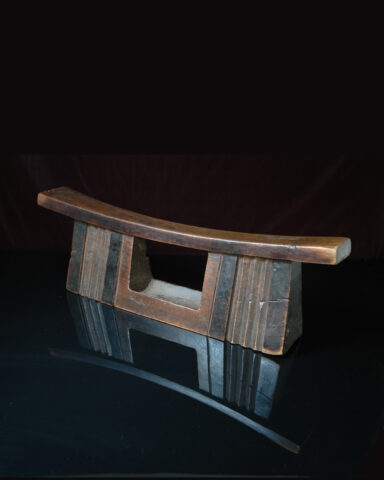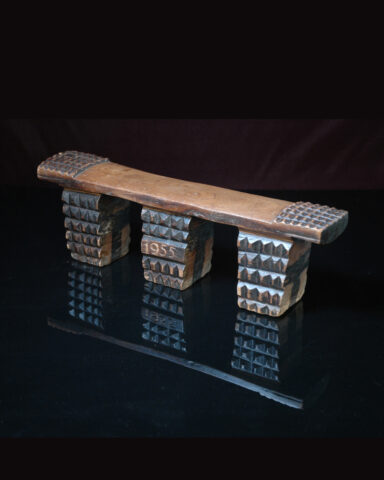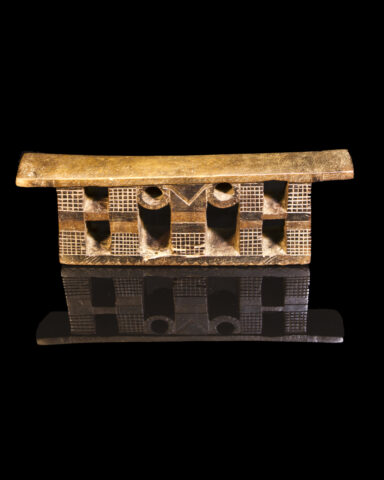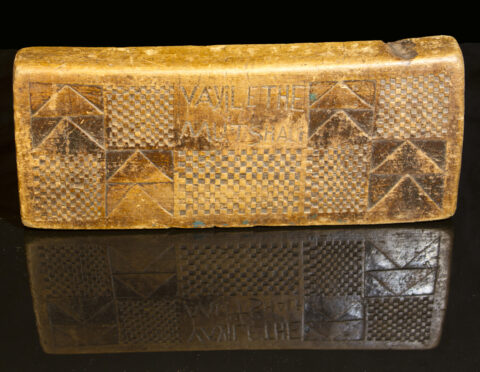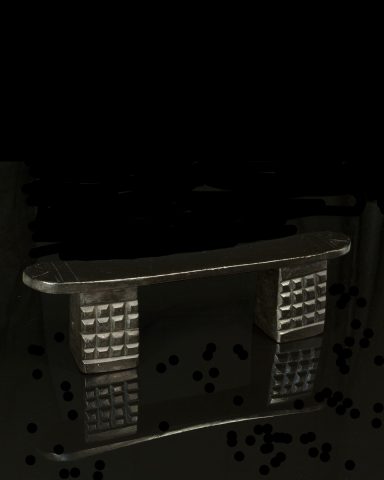Description
The Zulu people are part of the Nguni, an agrarian, homesteading culture living in Southern Africa. These headrests are hand sculpted from a single, hardwood block, and are either flat or beveled on top. They feature two or three legs or “links,” and a base. The process of preserving the structure and finishes of such pieces requires a deep knowledge of craft as transmitted through centuries via oral tradition. By social custom, this headrest is frequently offered to the bridegroom from the bride as a vehicle for communication with their Zulu ancestors. “(D)reams are considered to be sent by ancestors, and because dreams are dreamt on headrests, the headrest is a kind of antenna, and the strength of the signal is increased if the headrest is inherited from a senior relative” (Nettleton 2007). It is also believed to be symbolic of procreation with cattle and human descendants in agrarian societies. Imbued with the masculine quality of “ubunkunzi” (i.e., “like a bull”/“bullness”), the Zulu headrest signifies a virility indispensable to the survival of one’s family and the extended ethnic group.
REFERENCES:
Bishop, S.D. 1986. African Headrests. Scholar.ufs.ac.za.
Johannesburg Art Gallery. 1991. Art and Ambiguity: Perspectives on the
Brenthurst Collection of Southern African Art. Johannesburg: Johannesburg Art Gallery.
Nettleton, Anitra. 2007. African Dream Machines: Style, Identity and Meaning of African Headrests. Johannesburg: Wits University Press.


